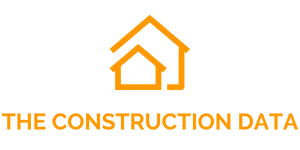
Cambodia Construction Report 2025: 5.2% Growth Boosted by New Projects and Credit
The latest research publication, “Cambodia Construction Market Size, Trends, and Forecasts by Sector – Commercial, Industrial, Infrastructure, Energy and Utilities, Institutional and Residential Market Analysis to 2029 (H1 2025)”, now available on ResearchAndMarkets.com, provides a comprehensive assessment of the Cambodian construction industry’s current status and long-term outlook. According to the report, Cambodia’s construction sector is poised to achieve a real annual growth rate of 5.2% in 2025, driven by a number of reinforcing macroeconomic and sector-specific factors.
This projected growth marks a notable rebound for the construction market following years of global uncertainty, and it reflects renewed investor confidence, rising government support, and increasing credit availability within the sector.
Key Growth Drivers in 2025
1. Surge in Project Approvals
One of the most significant growth enablers for the Cambodian construction market in 2025 is the noticeable rise in the number of approved projects. The Council for the Development of Cambodia (CDC) approved 112 new investment projects in the first two months of 2025 alone, reflecting strong interest from both domestic and foreign investors. These projects were valued at approximately KHR4.1 trillion ($1 billion), indicating a surge in capital commitment into the sector.
Of this, KHR1.2 trillion ($288 million) was directed toward the industrial sector, with the remainder flowing into infrastructure and other essential segments, underscoring a diverse investment portfolio that supports both productivity and long-term urban development.
2. Rising Credit to Construction
The construction sector in Cambodia has also benefited from improved access to credit. According to the National Bank of Cambodia (NBC), total bank credit to the construction sector stood at KHR22.22 trillion ($5.4 billion) as of November 2024, up by 10% year-on-year from KHR20.2 trillion ($4.9 billion) in November 2023. This sharp rise in credit volume suggests an increasing willingness among financial institutions to support construction ventures, thereby facilitating working capital, project financing, and long-term investments.
3. Government Bond Initiative
In a strategic effort to further strengthen the construction ecosystem, the Ministry of Economy and Finance announced in January 2025 its plans to issue government bonds worth KHR493.3 billion ($120 million) before the end of the year. These funds are intended to be channeled directly into the construction industry and associated infrastructure projects, providing a reliable public funding stream to complement private investments. This marks a significant shift in Cambodia’s fiscal strategy toward proactive support for its physical infrastructure.
Medium-Term Forecast (2026–2029): A More Robust Acceleration
Looking beyond 2025, the Cambodian construction industry is projected to register an average annual real growth of 7.7% from 2026 through 2029. This optimistic medium-term outlook is based on a broad range of planned infrastructure, industrial, and residential initiatives, many of which are embedded within long-term national planning frameworks.
1. Cambodia’s Comprehensive Transport and Logistics Master Plan (2023–2033)
A central pillar of future growth is Cambodia’s comprehensive transport and logistics master plan for 2023–2033, which outlines 174 priority infrastructure projects that require an estimated KHR150.9 trillion ($36.7 billion) in investment over a decade. These initiatives include the development of new highways, railway upgrades, logistics hubs, inland ports, and renewable energy corridors.
As this long-term infrastructure blueprint begins to take root, it is expected to have a transformative impact on how goods, services, and people move throughout the country, thereby unlocking new corridors of urban development and reducing overall construction costs through better logistics.
2. Growing Demand for Residential and Industrial Infrastructure

Population growth and urbanization are continuing to drive housing demand, especially in and around major urban centers like Phnom Penh, Sihanoukville, and Siem Reap. Simultaneously, Cambodia’s attractiveness as a manufacturing hub—due to low labor costs and favorable trade terms—has resulted in a growing number of industrial and logistics facility developments.
The approval of industrial projects in early 2025 exemplifies this trend. Key projects include:
- A KHR135.7 billion ($33 million) solar-powered electricity plant in Teuk Phos district, Kampong Chhnang province, aimed at enhancing the country’s green energy capacity and reducing dependency on imported fuels.
- A KHR127.4 billion ($31 million) metal processing facility in Chumkiri district of Kampot province, targeting export-oriented industries and value-added production.
- A KHR90.4 billion ($22 million) factory for metal and plastic tools in the Koh Kong Special Economic Zone, which will cater to regional manufacturing demand and support supply chains in neighboring Thailand and Vietnam.
These projects highlight Cambodia’s gradual shift from a reliance on garment exports to more diversified industrial capabilities, supported by targeted construction investments.
Sector-Wise Insights
The construction market in Cambodia is broadly segmented into six key sectors, each contributing to overall growth in unique ways:
- Residential Construction: Continued urbanization, a youthful population, and rising middle-class incomes are fueling the need for affordable housing, apartment complexes, and residential townships.
- Commercial Construction: Investments in tourism infrastructure, office space, and retail centers remain steady, particularly with Cambodia’s push to attract higher-end tourism and business activity.
- Industrial Construction: Growth in manufacturing, agro-processing, and logistics is resulting in robust demand for new factory buildings, warehouses, and industrial parks.
- Infrastructure: The most significant contributor to growth, driven by road, bridge, rail, and port developments, supported by the government’s master plan.
- Energy and Utilities: A national push toward energy security and sustainability is attracting investment into solar, hydro, and grid expansion projects.
- Institutional Construction: Public investments in education, healthcare, and government facilities are expected to grow gradually, improving access to essential services in both rural and urban areas.
Challenges and Considerations
While the outlook is optimistic, Cambodia’s construction sector still faces notable challenges. These include:
- Material costs volatility, especially for imported construction materials such as steel, cement, and heavy machinery.
- Skilled labor shortages, with demand for engineers, architects, and technicians outpacing supply.
- Regulatory hurdles and delays, particularly in the permitting and land acquisition process.
- Climate risks, such as flooding and heat waves, which could affect project timelines and costs.
To mitigate these challenges, collaboration between the government, private developers, and financial institutions will be critical. Enhanced training programs, public-private partnerships (PPPs), and improved governance will help ensure that planned projects are delivered on time and within budget.
Cambodia’s construction industry is entering a period of sustained expansion, underpinned by rising project approvals, growing credit, government bond funding, and long-term infrastructure strategies. With a forecasted growth rate of 5.2% in 2025 and an even more promising 7.7% annual average through 2029, the sector is expected to play a vital role in Cambodia’s economic transformation over the coming decade.
As developers, investors, and policy-makers align their efforts, the Cambodian construction sector is well-positioned to not only meet rising domestic demand but also enhance the country’s competitiveness in the ASEAN region and beyond.




